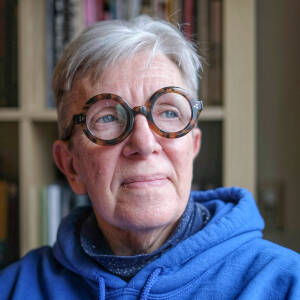Ouija's Embroidery
My maternal grandmother, known to those of us who loved her as Ouija (pronounced Weegee), spent her life in genteel poverty. Her father died young and her mother turned the family home into a boarding house to feed and educate her eight children in High Point, North Carolina. When Ouija was twenty and had just finished a two-year course in Normal School, which might have qualified her to teach, she fell in love with a kind-hearted mountain boy whose first priority in life was to share the little he had with those who had less. People said he had no ambition; some said he was a saint, others said he was a fool. He supplemented his meager earnings by hunting and fishing, and his siblings treated him with charity, pressing on him sacks of corn, bushels of peaches, small packets of the less desirable cuts of meat from their butchering: pig’s ears, sausage, brains. Ouija learned to cook and preserve whatever was available and to darn socks, do invisible mending of worn-out clothing, and tat lace antimacassars to hide her threadbare furniture.
Embroidery, for her, was a luxury. Like many poor women of her time, she started working outside her home by necessity during the Roosevelt years and continued till she was in her seventies. She worked in a school lunchroom while the Works Progress Administration lasted. Then she sold Appalachian Mountain geegaws to tourists in a small gift store. By the time I was a teenager she was a clerk in a small insurance agency. She worked, she ran the house, she cooked and cleaned, she did all the washing and ironing, and she did needlework, all by necessity. But she kept a penny jar on a shelf in the kitchen, and when she had enough pennies, she’d splurge on beautiful embroidery threads in many colors, all purchased at Woolworth’s after much deliberation. She would sketch designs for embroidery on the backs of used envelopes, with lists of the colors she’d like to use, if she had enough money to buy them.
She embroidered pillow cases, table cloths, napkins, handkerchiefs. They were gifts for the weddings, birthdays, holidays, graduations, new babies, and funerals of her many friends and relatives, and the least perfect ones were kept for her own use. This pillow case is the only piece of her work I still own. I seldom use it, but when I am gathering myself together and feel a need for a reminder of where I come from, I put it on my pillow and rest my face on it. I did that today.
Thank you for your kind thoughts and comments, your hearts and stars, your gifts to the memory of Quanice Hayes and to me. I haven’t responded to your many kind comments, but I rest my face on them.

Comments
Sign in or get an account to comment.


